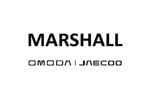This year remains a real challenge to everyone in the industry, whether they are exposed to the risk of used car values or operating in a retail environment where consumer confidence is fragile.
CAP is therefore maintaining a close watch on the market and regularly ‘sanity checking’ its forward view of the next three years.
The market over the next three years will be good for some vehicles and poor for others.
Regardless of overall movements, what matters is understanding how those variations will manifest themselves.
Factors affecting used car value performance include a slow rise in interest rates from the middle of 2011.
This will come as the above-target inflation figure forces the Bank of England to raise them from the historical low of 0.5% set in March 2009.
There will be some increase in new car supply, partly prompted by the strengthening of sterling against the euro, which will lower the landed cost of new cars for those manufacturers operating or pricing in Europe.
The improvement in margins offered by a stronger sterling provides the incentive to go for volume in the UK.
CAP therefore believes registrations may exceed the SMMT’s estimate for 2011 of 1.9 million.
Although this could be seen in isolation as a potential issue, the threat being increased late plate supply, CAP also believes that overall volumes remain sufficiently subdued to mitigate that risk.
The anticipated rise in finance costs, accompanied by rising utility bills and insurance, will increase the overall cost of living for many householders who will also suffer from the introduction of the taxation and national insurance changes announced in 2010.
This will reduce householders’ disposable income and is likely to be felt greatest in householder’s discretionary income.
CAP also expects ongoing fuel price rises on the back of continued demand growth in the Brazil, Russia, India and China economies as well as economic recovery in the Eurozone and North America.
This combined with a significant rises in insurance premiums, will encourage consumers to consider switching into more fuel efficient vehicles and those classified in lower insurance groups.
These factors are expected to encourage some further downsizing.
Consequently vehicles such as large 4x4s may come under renewed pressure following their long resurgence over the past two years.
CAP anticipates that although headline unemployment figures will remain steady, underlying this will be a dynamic of people losing their jobs, but staying off the register by taking temporary/part-time or lower-paid work.
Government austerity measures will see a reduction in social benefits and there will continue to be pessimism in the housing market and prolonged concerns over a double-dip recession.
However, CAP does not consider that these factors will be instrumental in the used car market dynamic.
Although this may seem counter-intuitive, what ‘feel good factor’ there is among consumers will probably not be significantly affected for those still in work.
Indeed, we also anticipate an increase in savings, which will boost confidence for those who are weathering the economic and welfare storm.
An early indication of whether this contention is true will be whether or not retail sales are depressed. Figures for January 2011 suggested that the slowdown in December sales was indeed short-lived.
Forecast 2011 – 2014
Taking these factors into account, CAP anticipates a modest overall downward correction of -1.3% across the used car market in 2011.
Sectors such as Large Executives and MPVs, 4x4s and Sports Performance will be hardest hit with reductions of -2.5%.
On the upside, City Cars, Superminis and Mini MPVs will be immune from this downturn, though this will be dependent upon careful control of volumes and therefore late plate supply.
Moving into 2012 CAP is predicting a gradual acceptance and adjustment by consumers to the new higher living costs and taxation regime. Consumers will also have adjusted to higher insurance premiums.
But higher interest rates will almost certainly be necessary to control inflation as commodity prices and economic growth bring upward pressure to bear on prices.
CAP also expects to see new car registrations rising to 2.3m. This will bring additional pressure on used values, through the ripple-down effect of increased late plate supply.
Further oil price rises in particular will exacerbate this picture and we foresee an overall reduction in used values of 1.4%, in addition to the normal lifecycle effects.
It is not until 2013 that we expect used values to completely stabilise as UK economic growth strengthens and consumers adjust to the new higher cost of fuel in particular.
By 2014 used values are predicted to resume growth, in cash terms, resulting from lower interest rates, an easing of the availability of credit and improvement in employment prospects. It should be noted that this does not mean reverse depreciation.
Market Movements vs Sector
Different sectors will be affected in different ways by the dynamics described above.
This is, of course, because they attract different customer groups.
The way in which CAP attempts to identify the differing impacts of economic factors by sector is to classify the customer base in social and economic terms. In other words, we identify who is likely to be in the market for certain types of vehicle and then assess how well off they will be and how confident they may feel.
For example, wealthy pensioners with modest incomes and few financial commitments are less susceptible to rises in interest rates and taxation.
In fact depending upon their financial arrangements a rise in interest rates may ultimately lead to an increase in their disposable income.
This socioeconomic group are more likely to select a mini MPV as their preferred vehicle of choice.
Hence it is considered reasonable to assume that a rise in interest rates does not have a direct negative impact on demand for used mini MPVs.
Although this is just one aspect of establishing a forecast value it provides a good starting point for understanding, by sector, the used market’s susceptibility to changes in economic conditions.













Login to comment
Comments
No comments have been made yet.